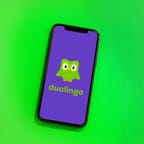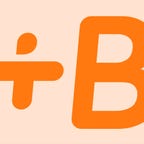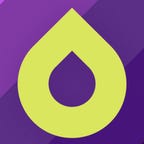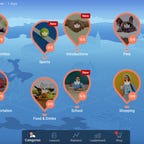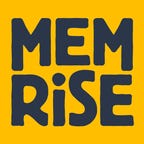Best Language Learning Apps for 2024
Thinking about learning a new language this year? These apps can help.
Our Picks
With a new year promising travel and exploration, many people resolve to start learning a new language. Whether you’re looking to brush up on your vocabulary before your next vacation or want to dive into a new challenge, learning a new language is a worthwhile, lifelong skill.
Learning a new language can feel overwhelming, especially during such a busy time of the year. Fortunately, there are more resources than ever available online to help you develop your vocabulary, pronunciation and reading comprehension skills. We’ve tested and evaluated many of these apps, looking at their pricing, the number of languages they offer and the different language learning methods they employ. And we’ve found that if you want to learn a new language -- no matter your budget, free time or preferred way to learn -- there’s an app that’s right for you.
Below, we've rounded up some of the best language learning apps so you can crush your “bonne résolution pour la nouvelle année” (French) “die Neuejahrvorsäten” (German) or “ανάλυση της πρωτοχρονιάς” (Greek). No matter what language you’re eyeing, there’s an app right for you.
As a regular Duolingo user, I enjoy the app's colorful interface and short, game-like exercises. The app doesn't restrict how many languages you can try to learn at the same time (personally, I think two is a good maximum if you want to retain anything). I use Duolingo to practice Spanish and German, but it offers lessons in “over 40 languages,” with Korean and Portuguese growing in popularity recently, according to the company.
To make sure you don't get rusty on the basics, even if you've "mastered" a skill by reaching a higher level, the skill can still "crack" if you don't review it consistently. Practice the skill again and it'll repair itself.
I like Duolingo's user-friendly layout, and the "streak" feature, which motivates you to keep going by tracking the number of days you've reached your point goal. In the app, you can access resources such as Duolingo Stories, which are short audio stories that allow you to check your comprehension skills as you go.
While the functionality of Duolingo is great, the service could be more transparent with prices and improve its FAQ help pages to more accurately reflect all the service’s costs and features. Super Duolingo, the ad-free premium version of the app, costs $13 a month (or $87 annually) and includes progress quizzes, monthly streak repairs and more. If your love of languages is a family trait, you can link up to six accounts under a Family Super Duolingo account for $10 a month. Select users might have access to Duolingo’s newest tier Duolingo Max, but that’s only for people in specific countries, learning Spanish or French on iOS devices -- and even then it may not be available. The Max rollout includes everything in Super Duolingo and adds two AI-powered features, Explain My Answer and Roleplay.
Best for an online school-type experience
Babbel
I found Babbel to be the most like a foreign language course you'd see in an online school curriculum. The minimalist layout of the Babbel app helps prevent a new language (French for me) from seeming overwhelming, without making it boring. Each lesson takes you through translations, including variations of the word or phrase, pictures, and whether it's formal or informal, something that’s important in many languages. If it asks you to spell a phrase, it provides you with the letters used.
You also get to see the new words you're learning used in common conversations, listen to them (if you choose to have audio on), repeat the phrases and learn more about verb groups. The 15-minute language lessons are easy to work into your day -- whether it's on your commute, before bed or on your lunch break. The My Activity module lets you track all your progress.
Babbel currently offers 14 languages and is free to sign up for, and the first lesson of every course is free. A monthly subscription costs $15. You can also choose to renew every three months ($38), every six months ($67), annually ($89) or make a one-time payment of $349 for lifetime access. The other subscription option is Babbel Live, which is a more traditional language learning experience with virtual classes led by an instructor with other students. You can sign up for unlimited classes with this paid subscription for one month ($90), three months ($209), six months ($359) and annually ($599).
Best for visual learners
Drops
I tried my hand at Greek on the Drops app. The app's fun, colorful layout definitely made the language (which has its own alphabet) less intimidating. The app shows users each word in the Greek alphabet and the English alphabet, and says the word and shows an image of it. Drops is owned by the popular game-learning platform Kahoot and is constantly adding new languages. The company recently added its 15th language, Catalan.
You can subscribe to Drops Premium for $13 a month, $70 annually. If you stick with the free version, you have to wait 10 hours to access another lesson, but you can check out your statistics after completing the lesson (correct answers, wrong answers and words learned) and tap on the words you've learned to hear them pronounced again (and see them written in the Greek alphabet). This can give you a leg up when your next lesson starts.
Best for helping you remember specific phrases
Mondly
Similar to Drops, Mondly is a fun, colorful app that has multiple features you can take advantage of even if you don't subscribe to premium. I tried beginner Hungarian on this app, and I liked how it offered to show you different conjugations if you tapped on verbs. The app packs images, translations and auditory aids to help your specific learning style. The instructor also speaks the words and phrases in a rather melodic way. That made it easier for me to recall them (even after trying different languages on different apps).
Mondly currently has lessons available for 41 different languages. It also has VR and AR products that let you integrate its language lessons, chatbots and games into virtual and augmented reality tools, like the Meta Quest 3 or other VR headsets.
Mondly is free to use, but you can subscribe to the Premium tier to unlock all content. You can subscribe for access to lessons in one language for $10 a month or $48 annually. You can also get lifetime access to all 41 languages for $90.
Best for learning to speak casually in a new language
Memrise
One of my favorite parts of Memrise is the app's use of short videos to show how real locals express different phrases in conversation. I tried the French course, and the first lesson alone let me listen to the tone of voice and casual pronunciation, as well as showing me the phrase's literal translation and explained its gendered usage. The app also helps you spot patterns in the language to make it easier to improve your skills. If you're brushing up on a language you're familiar with, you have the option to skip phrases you already know.
Memrise currently has lessons available in 23 languages. A few lessons are available for free daily, or you can upgrade to a Pro membership for $15 per month, $90 per year or $200 for lifetime access. The Pro membership removes ads, gives you access to all languages and lets you incorporate the 30,000 native speaker videos it has into your lessons.
Best for goal-oriented users
Busuu
When you sign up for Busuu, you select the language you want to learn, and the app helps you determine how advanced you are with it, why you want to learn it and how advanced you want to become. From there, you set a daily study goal, and if you subscribe to the premium plan, it creates a study plan so you'll reach your goal by a set date. For example, Busuu says if I study three times a week for 10 minutes a day, I'll be pretty fluent in my chosen language in about eight months.
Busuu's Basic plan is free, but you can subscribe to Premium for $14 per month.
I tried Italian with Busuu and I liked the clean, bright layout of the app. Busuu also offers helpful reminders: The second time I logged in, it reminded me about "weak words" I needed to review to improve my vocabulary. In addition to listening to a phrase paired with a photo of the corresponding action, Busuu included helpful vocabulary tips (like that "ciao" can mean "hello" or "goodbye").
Best for learning language musically
Lirica
If you listen to any song enough, you'll learn all the words through repetition -- even if they're in a different language. But how do you figure out what they mean? This is where the Lirica app comes in. This app is unique in how it approaches teaching Spanish and German. Instead of traditional teaching methods for learning a language, Lirica uses popular music by Latin and reggaeton artists to help you learn language and grammar. On top of learning the language, you're also immersing yourself in the culture behind it. The app also includes facts about the artist while you're learning.
Lirica has a one-week free trial and then it's $9 a month, $20 every six months or $30 annually. For now, the app offers only Spanish, German and English.
Best for breaking down how a language works
Language Reactor
While not technically an app, the free Language Reactor Chrome extension, formerly called Language Learning with Netflix, can be helpful on your journey to becoming multilingual. Install the extension and click the icon to launch the catalog of movie and TV show options. You do need a subscription to Netflix though.
Once you launch the catalog, you can pick from hundreds of titles that use movies on Netflix to help teach different languages. For example, if you want to work on your Spanish, select the language in the dropdown menu, along with the country where you're using Netflix. Then, the extension will generate a list of titles it can add Spanish closed captions to. To watch one of the films, just click the red "Watch on Netflix" button. Depending on the language you want to learn or what country you’re watching from, you might have fewer titles to pick from.
As the series or movie plays, two sets of subtitles display at the bottom of the screen. One set is your native language and the other is the one you want to learn. The words highlight as they're spoken, like a karaoke sing-a-long. You can listen to the dialogue phrase by phrase, pause and replay as needed, access a built-in dictionary, and more. Depending on the show or movie you’re watching, you’ll be able to translate your closed captions in up to 52 languages.
If you want to use Language Reactor for more active learning, it also has a chatbot, fun videos and a digital phrase book on its website.
Best for learning on the go
Pimsleur
Pimsleur is an app that offers 51 languages to learn but delivers the information in what is basically the form of a podcast. Essentially, you'll choose the language you want to learn and begin a 30-minute auditory lesson (which are downloadable and Alexa-compatible). The app also has a driving mode, so you can improve your language skills during long commutes without looking at a screen.
You get a seven-day free trial. After, you’ll be able to continue with an Audio-Only subscription ($15/month) that gives you access to all languages and audio-only features. If you want to focus on just one language, you can upgrade to the Premium level for $20 a month, which gives you additional features like lessons, roleplaying challenges and digital flashcards. And if you want everything -- all languages and features -- the All-Access subscription is $21 per month.
Best for auditory learners
Rosetta Stone
Perhaps the best-known language learning service, Rosetta Stone has come a long way since it started in the '90s. My parents still have a box set of discs for learning Spanish somewhere in their house. It's a lot easier now with the Rosetta Stone app, but you still need at least 30 minutes to complete a Core Lesson.
I tried Rosetta Stone's first Irish lesson, which was primarily auditory with images, though there are ways to customize the app to your learning preferences. The lesson started out fairly challenging, especially since I was completely new to the Irish language. But it did get easier as I went along.
The iOS app got an update in 2021 that brought augmented reality into the mix. This enables Seek and Speak, which is a scavenger-hunt-style challenge. Point the phone camera at an object and get a translation in the language you're learning.
Rosetta Stone currently offers lessons in 25 languages. Subscription options include $48 every three months, $127 annually, or you can get a lifetime subscription, currently priced at $199.
Language Learning FAQs
How do I start learning a new language?
Learning a new language can feel overwhelming at first. There are many areas to begin in -- vocabulary, grammar, pronunciation, reading and writing. Many of these language learning apps will walk you through a combination of these to give you a strong foundation to build on.
When is the best time to start learning a new language?
While many people make New Year’s resolutions to learn a new language, no season or time of year is better than another.
How long does it take to learn a new language?
There are varied stats about how long it takes to learn a new language, but there are a number of factors that can affect how quickly you learn. Most estimates say that you can become conversational in a couple of months, while fluency can take up to a year or longer.


